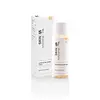What's inside
What's inside
 Key Ingredients
Key Ingredients

 Benefits
Benefits

 Concerns
Concerns

No concerns
 Ingredients Side-by-side
Ingredients Side-by-side

Water
Skin ConditioningBis-PEG-8 Dimethicone
Skin ConditioningButylene Glycol
HumectantGlycereth-26
HumectantPropanediol
SolventSodium Hyaluronate Crosspolymer
HumectantGlyceryl Polyacrylate
Pentylene Glycol
Skin ConditioningNiacinamide
SmoothingCentella Asiatica Extract
CleansingXylitylglucoside
HumectantCopper Chlorophyll
Cosmetic ColorantCI 77400
Cosmetic ColorantGlycerin
Humectant1,2-Hexanediol
Skin ConditioningXylitol
HumectantAscorbic Acid
AntioxidantAnhydroxylitol
HumectantCaprylic/Capric Triglyceride
MaskingCitric Acid
BufferingHydrogenated Lecithin
EmulsifyingGlucose
HumectantCI 77220
Cosmetic ColorantArginine
MaskingHydroxypropyl Methylcellulose
Emulsion StabilisingAcetyl Glucosamine
Skin ConditioningGlutathione
Phenoxyethanol
PreservativeEthylhexylglycerin
Skin ConditioningWater, Bis-PEG-8 Dimethicone, Butylene Glycol, Glycereth-26, Propanediol, Sodium Hyaluronate Crosspolymer, Glyceryl Polyacrylate, Pentylene Glycol, Niacinamide, Centella Asiatica Extract, Xylitylglucoside, Copper Chlorophyll, CI 77400, Glycerin, 1,2-Hexanediol, Xylitol, Ascorbic Acid, Anhydroxylitol, Caprylic/Capric Triglyceride, Citric Acid, Hydrogenated Lecithin, Glucose, CI 77220, Arginine, Hydroxypropyl Methylcellulose, Acetyl Glucosamine, Glutathione, Phenoxyethanol, Ethylhexylglycerin
Water
Skin ConditioningArginine
MaskingGlycolic Acid
BufferingButylene Glycol
HumectantBetaine
HumectantHistidine
HumectantBeta Vulgaris Root Extract
Skin ConditioningGlutamic Acid
HumectantProline
Skin ConditioningGlycine
BufferingAlanine
MaskingValine
MaskingEthyl Hexanediol
SolventMethionine
Skin ConditioningIsoleucine
Skin ConditioningLeucine
Skin ConditioningTyrosine
Masking1,2-Hexanediol
Skin ConditioningCaprylyl Glycol
EmollientTropolone
Skin ConditioningDisodium EDTA
Ingredients Explained
These ingredients are found in both products.
Ingredients higher up in an ingredient list are typically present in a larger amount.
1,2-Hexanediol is a synthetic liquid and another multi-functional powerhouse.
It is a:
- Humectant, drawing moisture into the skin
- Emollient, helping to soften skin
- Solvent, dispersing and stabilizing formulas
- Preservative booster, enhancing the antimicrobial activity of other preservatives
Arginine is an amino acid that is important for human development. Your body uses is it to produce hair keratin and skin collagen.
As a cosmetic ingredient, Arginine has antioxidant properties and can also help repair damaged skin. This ingredient is derived either synthetically or from animals.
Arginine isn't fungal acne safe when used in the presence of other lipids (fats, fatty acids, oils, esters, etc). Oils and fats occur naturally within the skin, so take caution when using Arginine if you're prone to fungal acne.
Learn more about ArginineButylene Glycol (or BG) is used within cosmetic products for a few different reasons:
Overall, Butylene Glycol is a safe and well-rounded ingredient that works well with other ingredients.
Though this ingredient works well with most skin types, some people with sensitive skin may experience a reaction such as allergic rashes, closed comedones, or itchiness.
Learn more about Butylene GlycolWater. It's the most common cosmetic ingredient of all. You'll usually see it at the top of ingredient lists, meaning that it makes up the largest part of the product.
So why is it so popular? Water most often acts as a solvent - this means that it helps dissolve other ingredients into the formulation.
You'll also recognize water as that liquid we all need to stay alive. If you see this, drink a glass of water. Stay hydrated!
Learn more about Water